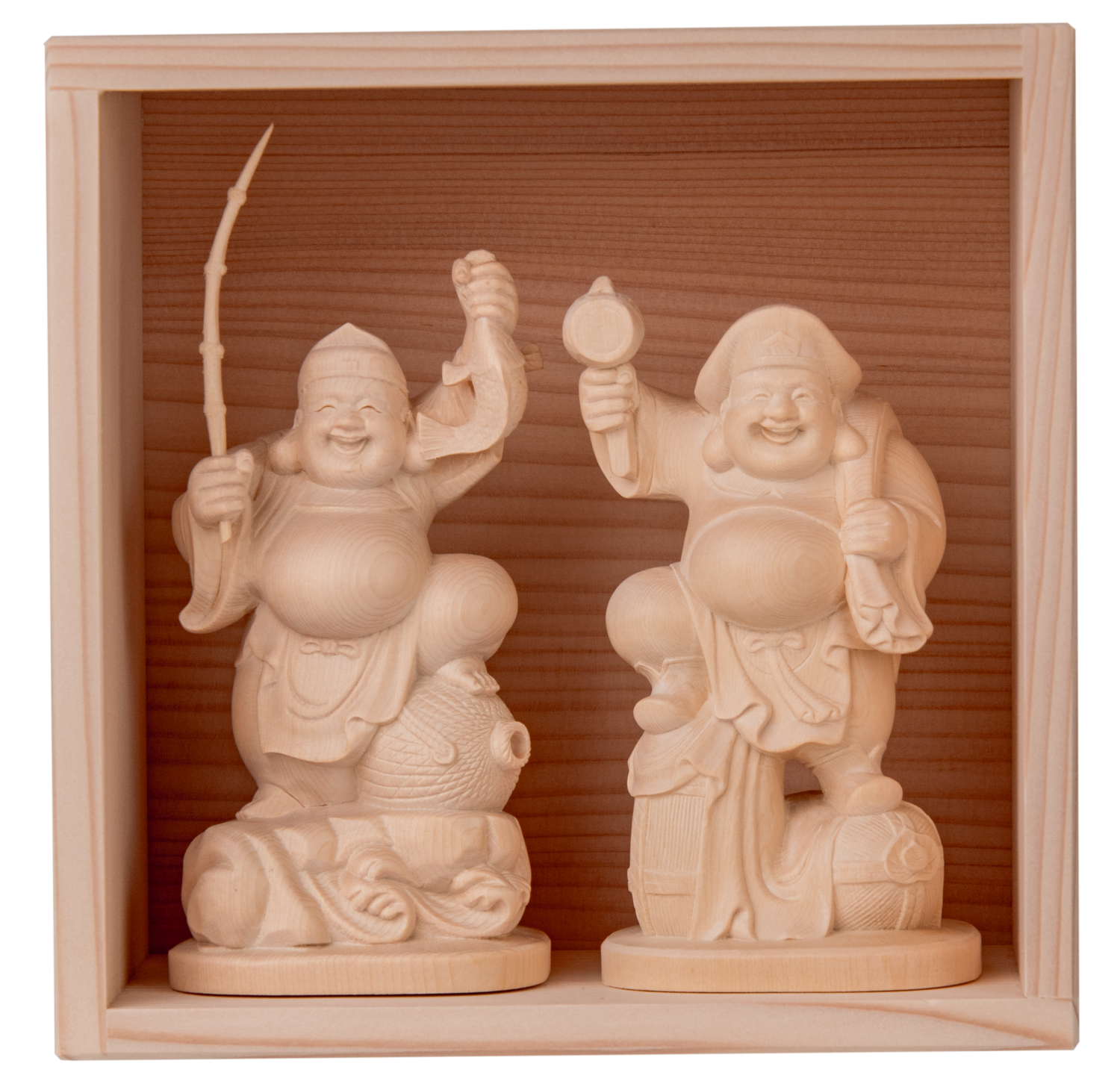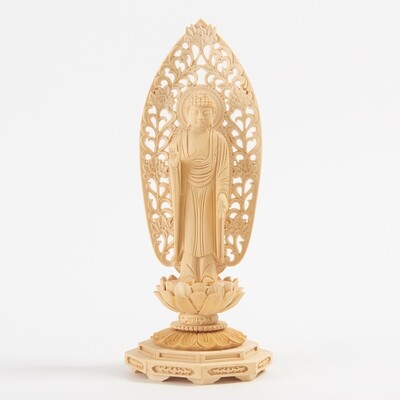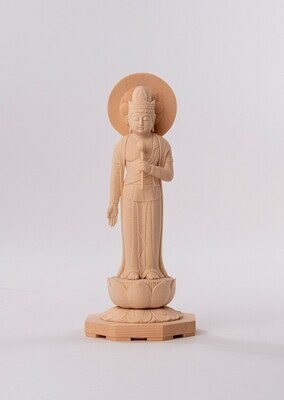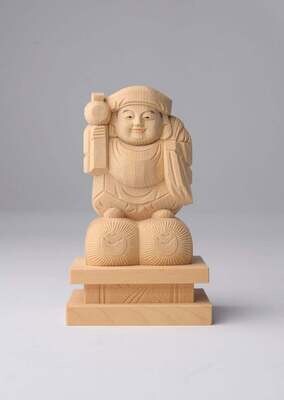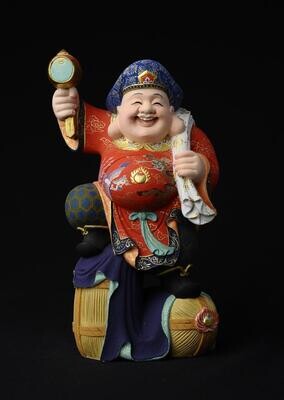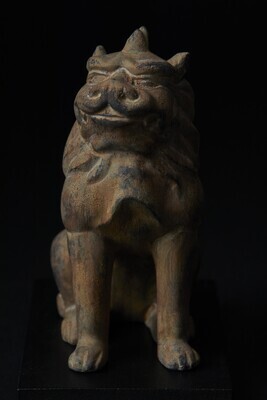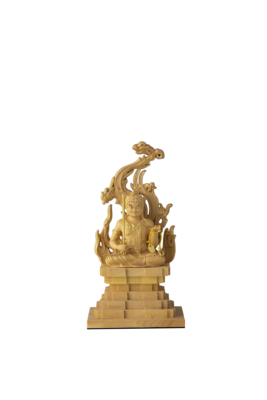Ebisu Daikokuten Large Consecrated (恵比寿大黒天 大 開眼供養済)
The Seven Lucky Gods have long been revered as deities of good fortune, bringing blessings to people. Among them, Ebisu and Daikokuten are known as the two primary representatives of the Seven Lucky Gods. Ebisu, considered a pure Japanese deity as the first child of Izanagi and Izanami, and Daikokuten, derived from the Hindu god Shiva, are both associated with prosperity in business, wealth, and good fortune. It was a common practice among the business and artisan communities to worship both of them side by side.
The history of this tradition dates back to ancient times, as described in the medieval narrative collection "Chiri-Zuka Monogatari," which mentions the practice of carving wooden statues or painting images to pray for wealth and placing them in every household. This tradition has been a source of support for the common people for over 450 years.
"Daikaiun (Great Fortune) Cheers! Ebisu Daikokuten" is a creation based on the work of a master craftsman who thrived from the late Showa era to the early Heisei era when auspicious items gained popularity. The original design has been adapted to a compact size suitable for modern living spaces.
To further enhance the blessings, Ebisu and Daikokuten are enshrined within a masu (square wooden box), and the statue has undergone a consecration ceremony for opening the eyes at Juryoin, a sub-temple of Zenkoji Temple in Shinshu. Therefore, the efficacy of the blessings is expected to be even more pronounced.
This statue, with its fortunate and gentle smile, smooth curves, and meticulous craftsmanship, is recommended both as an auspicious item and an art craft. The value of this revered image is further elevated by the spiritual presence acquired through the consecration at the prestigious temple. Consider welcoming it into your home as the deity of fortune.
Juryoin, Zenkoji Temple
Juryoin is one of the sub-temples of Zenkoji Temple in Shinshu. The main deity is the Sun and Moon Fudo Myoo, where the eyes are likened to the sun and moon. Throughout history, it has been a dojo strictly devoted to prayers and rituals, attracting people's faith. In the Warring States period, it is said to have erected an earthen mound to mourn the dead from the Battle of Kawanakajima and conducted elaborate ceremonies. Even today, annual ceremonies led by successive priests are held in front of the Memorial Pagoda for the Battle of Kawanakajima. All the products have undergone consecration ceremonies for opening the eyes, and certificates of eye-opening ceremonies are included.
- Size: 205(H)×205(W)×125(D)mm
- Material: Hinoki, Momi
- Made in China
- Shipped globally from Japan by using DHL. DHL is the world-class shipping services provider who makes international delivery a fast, smooth, and hassle-free experience. Delivery time can be faster than when shopping at an e-commerce website in your country, and of course your package will be covered by insurance. You can check the shipping cost for your entire order before you make a purchase
